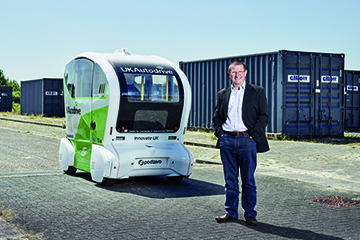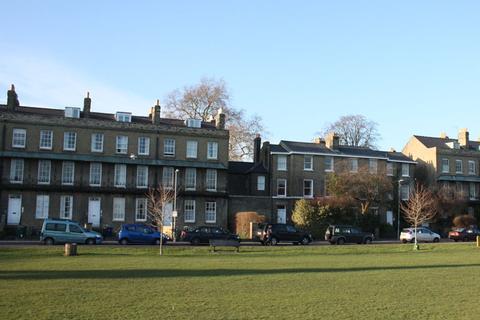John Miles – Shared Transport
"The hallmark of a developed society is not that even the poor have cars. It is that even the affluent use public transport".

Movement is a characteristic of all animal life and mechanised movement has become one of modern human life. From the invention of the wheel to the development of manned space flight, improving the way we travel has been a fixation of engineers and many of them have left their names in our history books: Brunel, Ford and Whittle are a few well-known examples. And, trailing behind these super-stars, are countless other engineers, transport planners and politicians whose names have never hit the headlines but who have contributed to improving mobility for their times. Each generation has faced its own challenges, but as our predecessors have solved the great problem of providing affordable and ubiquitous mobility for the masses, we now face the consequences of that success, with issues of congestion, pollution, consumption of natural resources and road safety.
In response to these challenges, it has become fashionable to demonise cars. They are blamed for guzzling precious natural resources, choking our roads with their presence and choking us with their exhaust. If that isn’t bad enough, they are also killing and maiming an unacceptable number of people each year in avoidable road accidents. Therefore they are bad. We should be more sensible and use buses and railways instead.
London is frequently cited as a place where the tide has turned and, we are told, fewer people now own cars and more choose to take the bus or tube for their everyday journeys. This is true, but few appreciate the scale of public subsidy that sits behind this great success. London’s buses and underground system are subsidised at a scale that would be unaffordable if repeated across the whole of the UK. In addition, there is not the capacity in our railway system to provide a meaningful alternative to road use. Our railways currently carry around eight per cent of our total passenger-miles, so we would need 12 times as much railway infrastructure to replace road transport directly with rail.
No: while we demonise the car, there is no other form of mechanised transport that offers anywhere near the same level of convenience and personal mobility to ordinary people.
And the benefits of personal mobility are legion, despite the obvious problems. So, can we develop new means of transport that continue to provide affordable mobility at the grand scale, whilst simultaneously solving problems of congestion, pollution, consumption and safety? This is the focus of my research.
The signs are promising. The emergence of low-emission propulsion technologies in the form of electric and hydrogen-fuelled vehicles, combined with advances in computing, information and communications, is helping us to cut to the heart of the dominance of the private car, which is almost universal in its appeal, because of its convenience and affordability. Shared transport systems, however, are inherently more efficient than private transport systems. But, until shared/public alternatives begin to match the car’s star attributes, road users will continue to be reluctant brides. So, the challenge is to design shared transport systems that have the attraction, convenience and affordability of the car.
If you could call for a shared service that picked you up from your door in a clean and attractive vehicle, and took you quickly and conveniently to your destination for a fare that is less than the cost of parking, you would use it without a second thought. This is a far cry from the current public transport offering of fixed-route, fixed-timetable buses and trains. These arrangements suit the delivery system rather than the traveller, and are dictated by the economics of operation. However, the advent of autonomous vehicles and hand-held communications devices has the potential to change that economic equation. It is rapidly becoming possible to match traveller demand with available vehicles in real time and at city-scale. If these systems were to use driverless vehicles, the service would be affordable.
Despite the apparent simplicity of this argument, the journey of tomorrow will not be accomplished by introducing one single new form of transport. There will continue to be a place for mass transit, buses, taxis, bikes, walking and (maybe, even) driverless pods. This is because different needs are best served by different systems. Each element will, of course, be delivered by a new generation of electric, low-emission, vehicles, but it will be the ability to string these services together to provide one convenient, affordable, multi-modal journey that will make the biggest difference for us all. When shared transport systems become ‘as accessible and affordable as running water’ (to quote Travis Kalanick, the first CEO of Uber), we will have released the stranglehold of the car on our daily lives.


